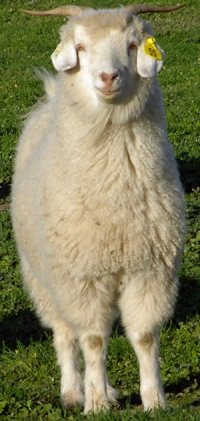Cashmere is a type of fine, strong wool or under-down hair from certain breeds of goat. These hairs are finer and softer than the outer hairs of the goat, and shed naturally every year. The fibers can be collected by combing or by shearing. Shearing tends to leave more of the outer, stiffer guard hairs in the wool and results in a slightly less fine fiber.
The name cashmere derives from the old British spelling of Kashmir, where the goats were first known to be domesticated.
The Cashmere goat is commonly known as Capra aegagrus hircus and is shorn or combed once a year to produce approximately 9 ounces of the downy wool.
Pashmina is a type of cashmere from south Asia which is hand combed, spun and woven from Pashmina or changthangi goats which are indigenous to the high mountains of the Himalayas in Kashmir, Tibet and Nepal.
The Pashmina goats have been herded and used for the production of fine wool (which is the actual translation of the word ‘pashmina’) for many centuries. Kashmir, called ‘Cashmere’ by the British is where the name for these fine wools derived.
The history of these fine hand-spun, woven and embroidered shawls dates back to the period between the 3rd century BC and 11 AD. However, often Zayne Ul Abidin, the ruler of Kashmir in the 15th, is credited with the introduction of cashmere weavers and weaving.
It was the introduction of a fine pashmina shawl made in the Kashmir region and brought to Paris in approximately 1800 that sparked the widespread interest in the fiber and a rapid introduction of various breeds of the goats, and establishment of French weaving factories. This was followed by cross breeding of Angora and Cashmere goats and the spread of the goats and fiber production around the world.
Regions of Scotland became well known for their weaving and textile industries of French produced fiber, which produce fine cashmere shawls, scarves, coats and clothing. Some breeds of Angora and Cashmere mix goats were also taken to New Zealand, and cashmere textile production also became well established in the United States during the 19th century.



